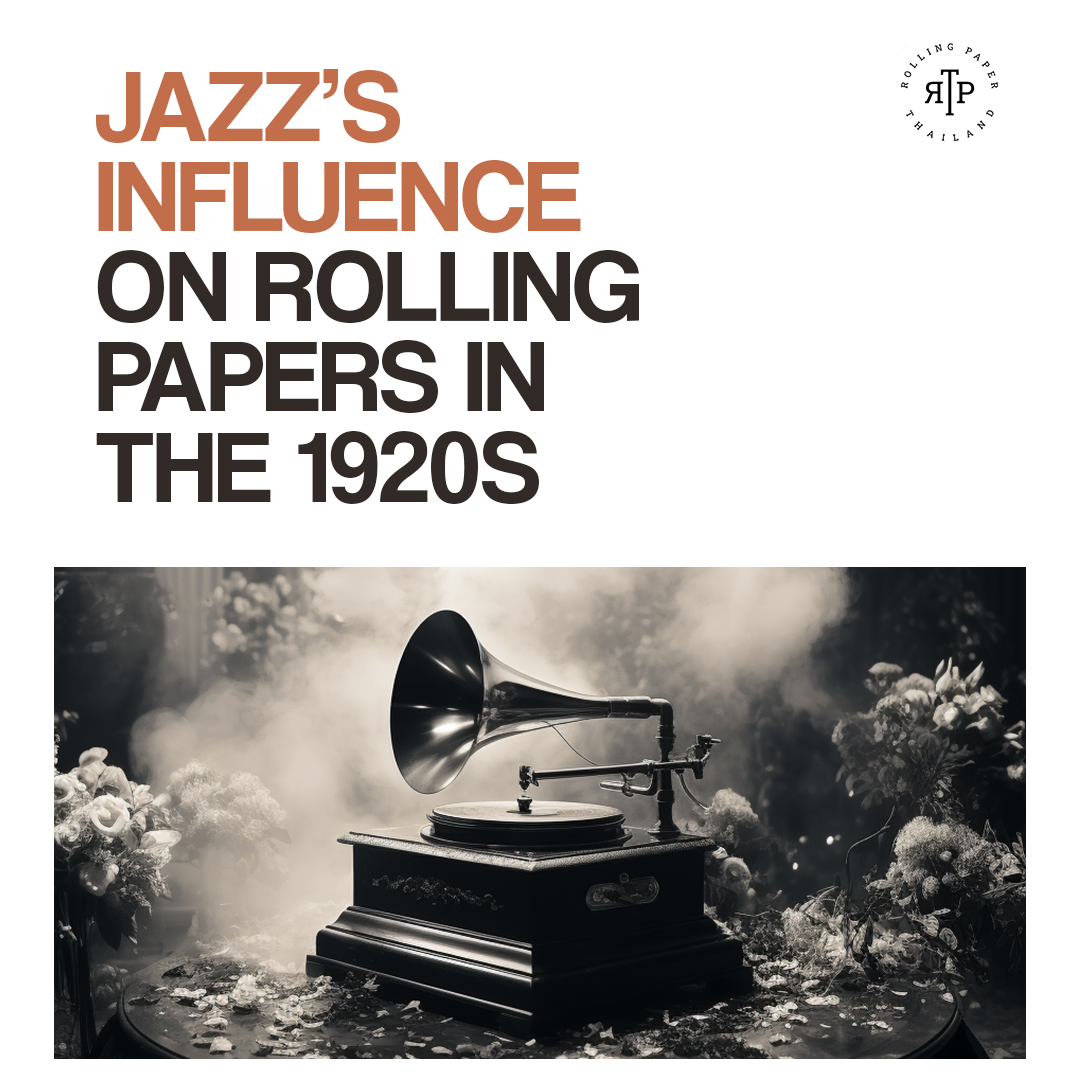In the vibrant era of the 1920s, cannabis and jazz were closely intertwined, with the rolling paper industry playing a significant role in their connection. As the demand for rolling papers grew, manufacturers responded with innovation, creating thinner and more refined papers that enhanced the smoking experience. This blog explores the impact of jazz on cannabis culture during the 1920s, highlighting the historical significance of this influential era.
Cannabis and Jazz: A Cultural Conduit
During the 1920s and 1930s, cannabis served as a conduit for creativity, music production, and performance, particularly within Black communities. Cannabis slang and cultural development flourished, with joints being sold outside tea pads or cannabis bars. Musicians would sing tributes to the substance, using codes like “tea,” “reefer,” and “grass” due to the national vilification and impending criminalization of the drug.
One notable jazz musician who embraced cannabis culture was Cab Calloway, a frequent visitor to New York City’s renowned Cotton Club. Calloway’s songs, such as “Reefer Man,” featured clever lyrics like “If he trades you dimes for nickels / And calls watermelons pickles / Then you know you’re talking to the reefer man.” Similarly, blues singer Trixie Smith recorded the iconic cannabis tribute “Jack, I’m Mellow,” which gained further recognition as the theme song for the now-canceled Netflix show “Disjointed.”
Louis Armstrong, one of the most renowned jazz musicians of all time, was also an avid user of cannabis. Armstrong, known as a “viper” (a term for jazz musicians who smoked cannabis), regularly incorporated the drug into his creative process. He credited cannabis, or “the gage” as it was commonly referred to, for enhancing his connection to the individual notes of his music. However, as the Prohibition Era approached, Armstrong felt compelled to give up cannabis.
Cannabis and the Jazz Experience
Cannabis had a profound influence on the perception and performance of jazz musicians. Its time-slowing effects allowed musicians to fully immerse themselves in the present moment, breaking barriers during the racially segregated Jim Crow Era. Jazz musicians like Armstrong utilized cannabis to lower inhibitions, experiment creatively, and explore new beats, sounds, and rhythms. This approach transformed jazz into infectious, dance-inducing, and joy-filled music.
Music psychologist Daniel Levitin, in his book “The World in Six Songs,” explains that tetrahydrocannabinol (THC), the psychoactive compound in cannabis, disrupts short-term memory, enabling musicians to fully connect with their music and focus on each individual note they play.
Cannabis, Jazz, and Black History
Jazz, cannabis, and Black history have been deeply intertwined since their inception. While politicians demonized cannabis and jazz as “Satanic,” Louis Armstrong’s music dominated American households, defying societal prejudices. Throughout history, Black activists have been at the forefront of cannabis culture, as exemplified by Armstrong and other jazz vipers. Today, influential figures in the cannabis industry like Snoop Dogg, Wiz Khalifa, and Whoopi Goldberg continue to empower their communities through weed entrepreneurship.
The need for diversity within the cannabis industry remains crucial. Black entrepreneurs and advocates like Hope Wiseman, Dasheeda “The WeedHead” Dawson, and Mary Pryor are reclaiming what was historically denied and stolen from Black communities. Pryor, co-founder of the education firm Cannaclusive, seeks to address the industry’s lack of diversity.
It is essential to recognize that cannabis has been used as a tool of oppression against Black and brown communities, from its origins as a tool for enslavement to its subsequent criminalization and present-day challenges of disenfranchisement, gentrification, and cultural appropriation. By reopening spaces within the industry and mainstream culture, we can create opportunities for Black creatives and entrepreneurs to thrive and reclaim their rightful place.
Conclusion
The jazz era of the 1920s had a profound impact on cannabis culture, with rolling papers playing a pivotal role in facilitating the enjoyment of cannabis. Jazz musicians like Louis Armstrong embraced cannabis and its creative benefits, contributing to the evolution of music and culture. Understanding this historical connection enables us to appreciate the significance of cannabis in jazz and its lasting impact on society.
Are you interested in carrying top-quality rolling paper products from renowned brands like VIBES, RAW, Elements, Smoking, and Mascotte? We have you covered! Contact us today to explore the opportunity of adding these exceptional rolling papers to your inventory. Don’t miss out on providing your customers with the finest rolling paper options on the market. Reach out now and let’s discuss how we can meet your wholesale needs. Let’s roll and joint together!

